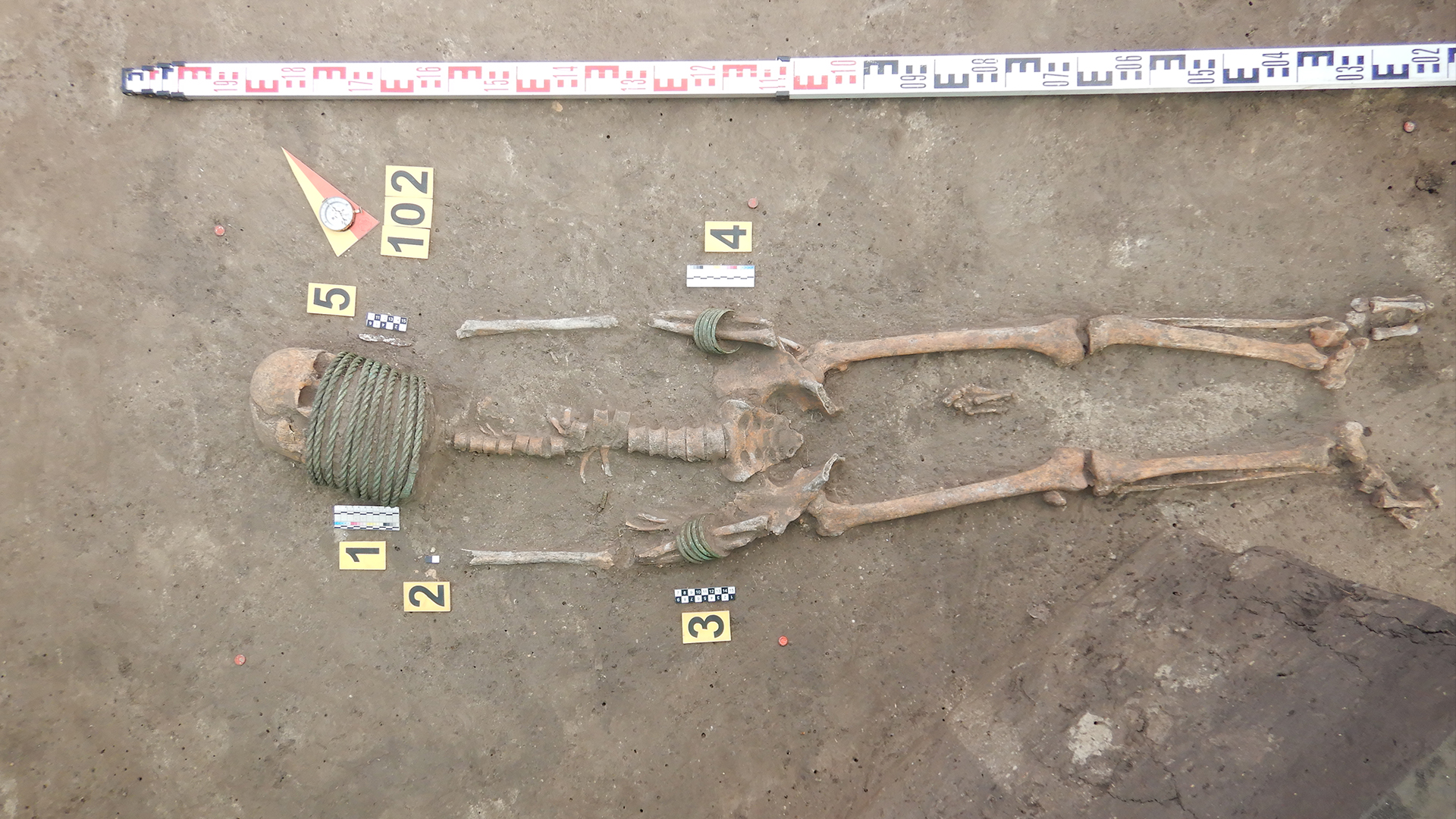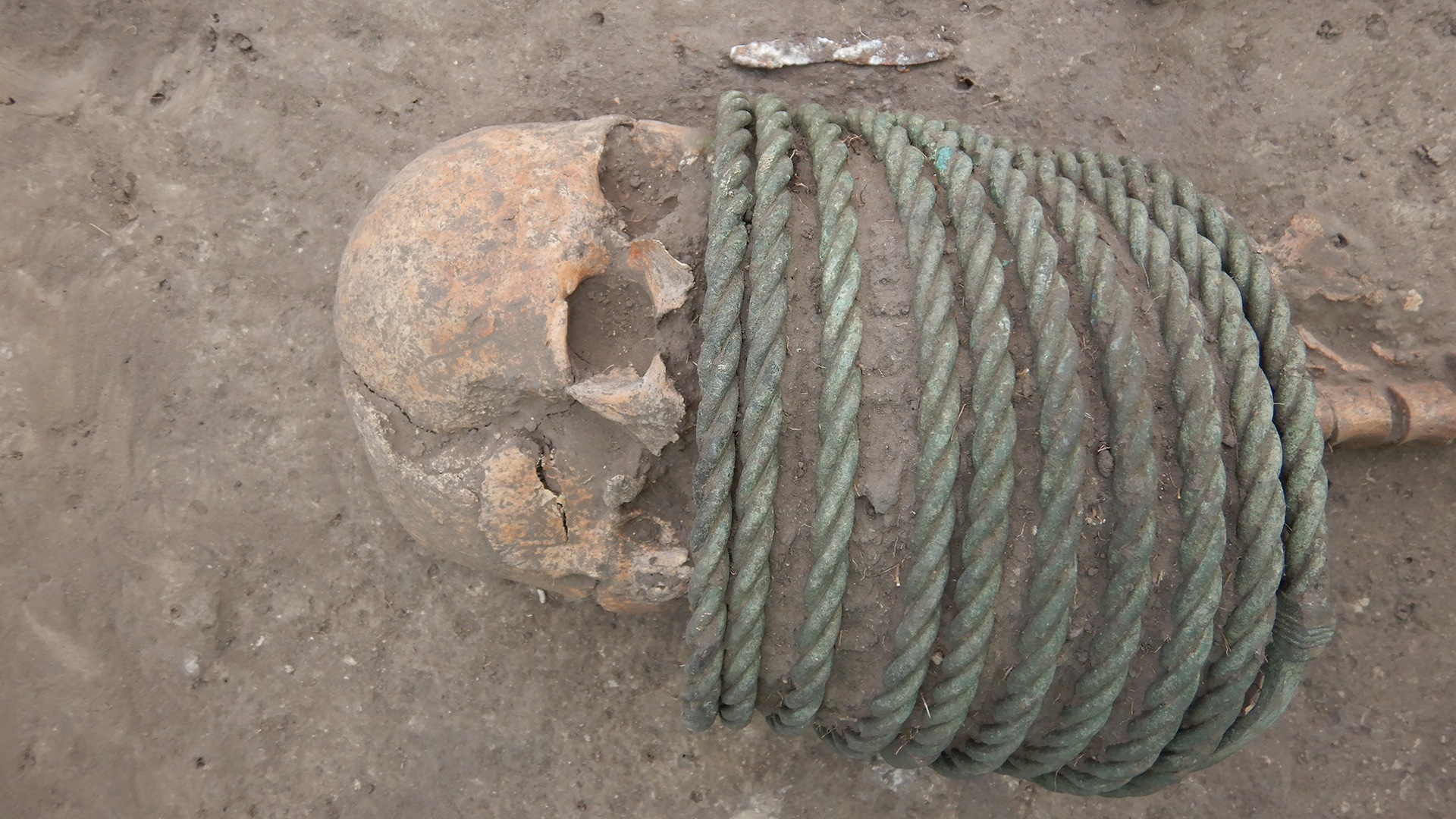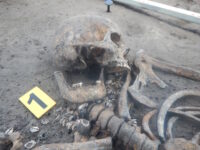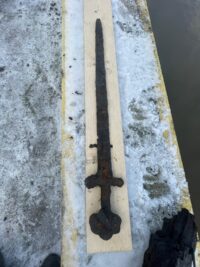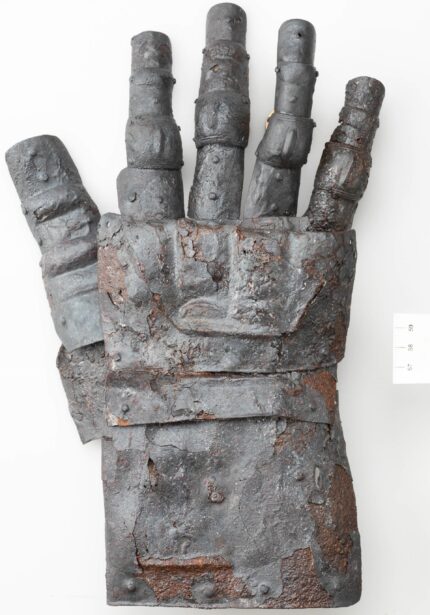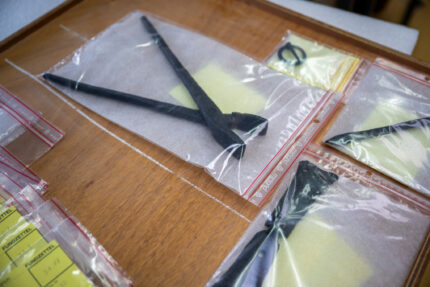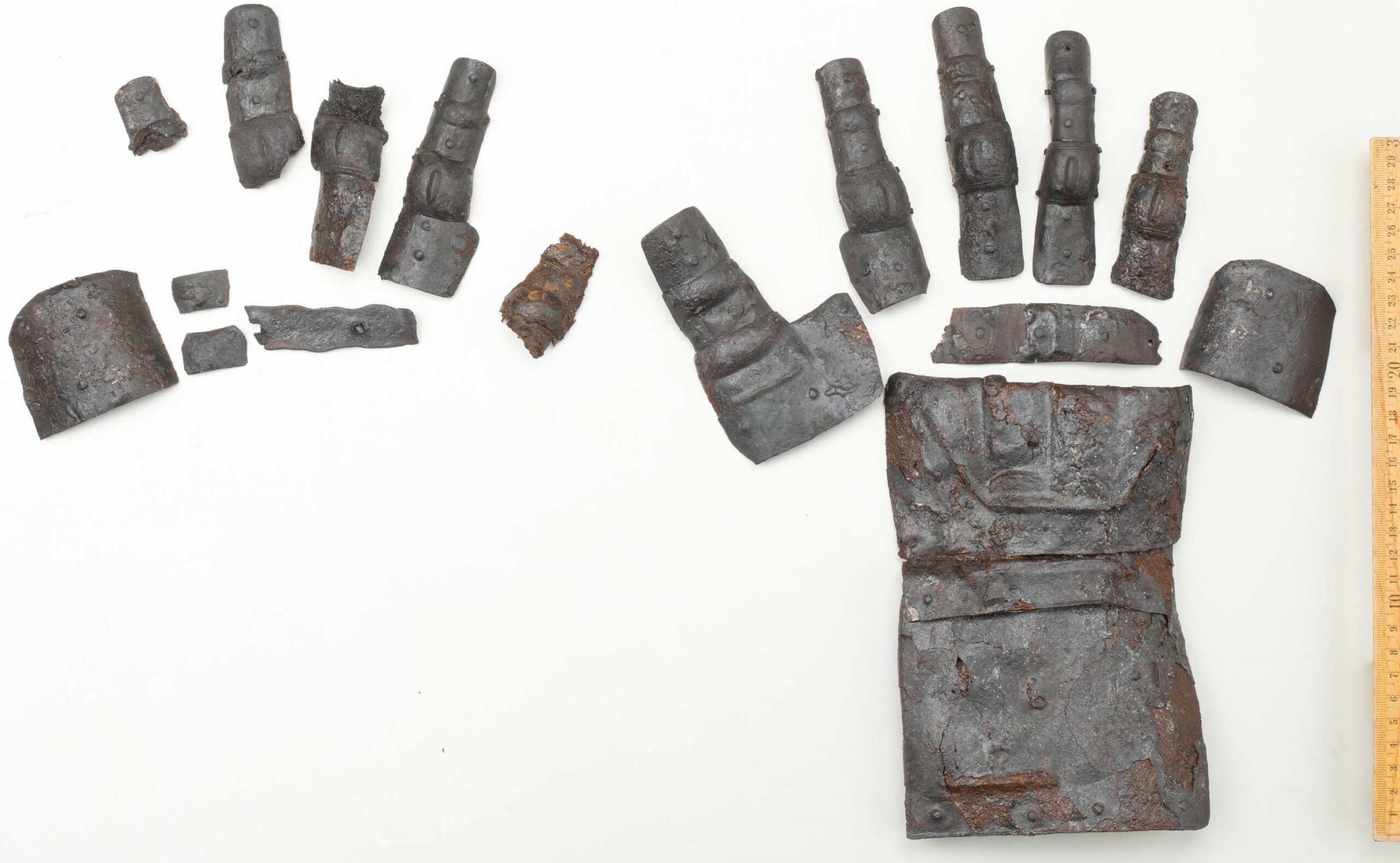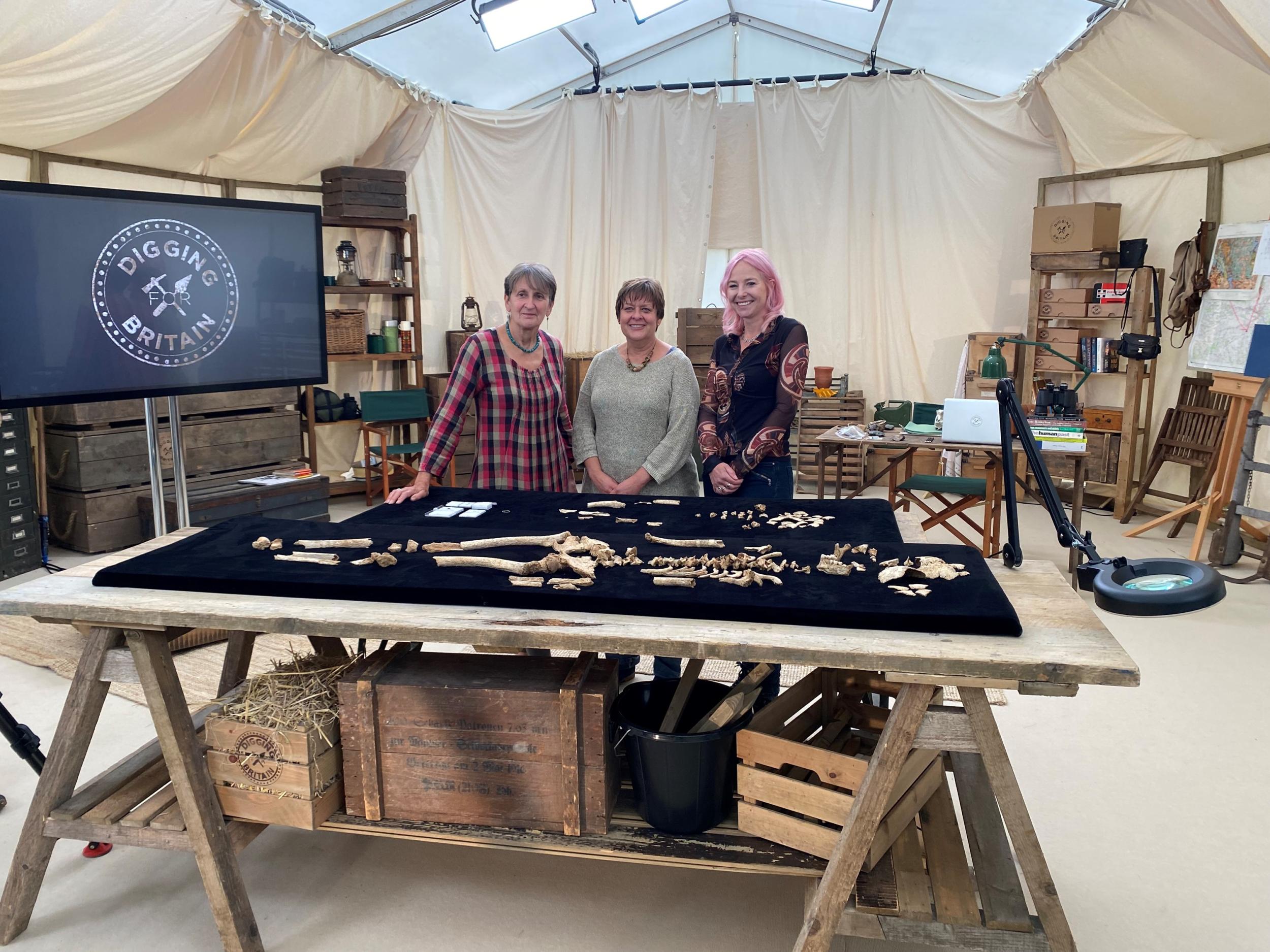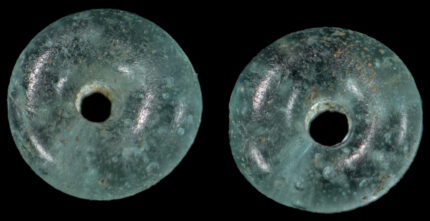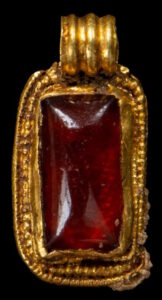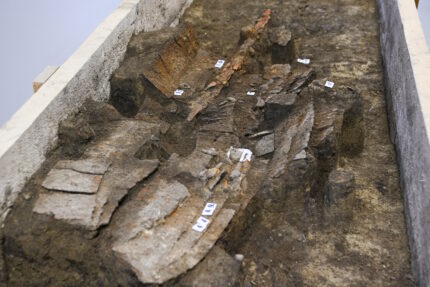 Archaeologists from the Déri Museum have unearthed a complete set of lamellar armor in an Early Avar grave near Ebes, northeastern Hungary. It dates to the first half of the 7th century and is only the second set of Pannonian Avar lamellar armor ever discovered largely intact and in its original position. The first was found in Derecske just 10 miles south of Ebes in 2017.
Archaeologists from the Déri Museum have unearthed a complete set of lamellar armor in an Early Avar grave near Ebes, northeastern Hungary. It dates to the first half of the 7th century and is only the second set of Pannonian Avar lamellar armor ever discovered largely intact and in its original position. The first was found in Derecske just 10 miles south of Ebes in 2017.
Believed to have originated from the Eastern Eurasian Steppe, the Pannonian Avar peoples invaded Eastern Europe in the 6th century and established a Khaganate that ruled over the Pannonian Basin until its defeat by Charlemagne’s son Pepin of Italy in 796. Their heavy cavalry was a key element of their success in battle, and lamellar armor was an essential part of the equipment of Pannonian Avar heavy cavalry. They were not military-issue, not uniforms. The officers had them custom-made to fit, and there is a wide range of types, sizes and shapes with different numbers of plates and different laces.
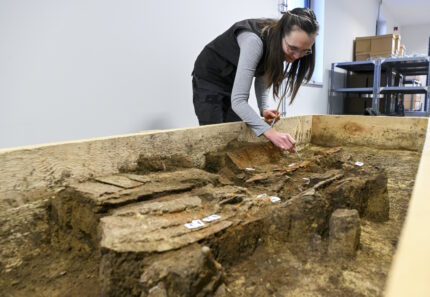 The grave was found in November 2023 during a preliminary excavation of a ten-hectare site on the outskirts of the village of Ebes. Two Avar cemeteries had been discovered earlier in the course of the excavation project, but this grave was solitary, not part of either of the cemeteries. The team first encountered the skeletal remains of a horse. Under the horse bones the set of armor was found, a wooden quiver with arrows, a bow and a sword placed atop the armor. The deceased was not buried wearing the armor, rather it was laid over him, then topped with his weapons and the horse of top of them.
The grave was found in November 2023 during a preliminary excavation of a ten-hectare site on the outskirts of the village of Ebes. Two Avar cemeteries had been discovered earlier in the course of the excavation project, but this grave was solitary, not part of either of the cemeteries. The team first encountered the skeletal remains of a horse. Under the horse bones the set of armor was found, a wooden quiver with arrows, a bow and a sword placed atop the armor. The deceased was not buried wearing the armor, rather it was laid over him, then topped with his weapons and the horse of top of them.
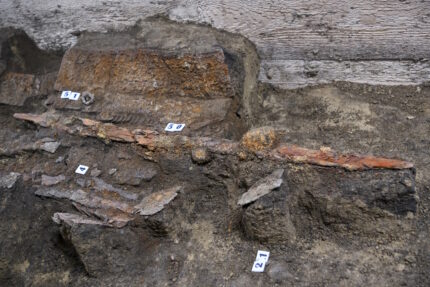 The horse bones were removed in situ. The rest of the grave and its artifact assemblage were removed in a large soil block and transported to the museum for excavation in laboratory conditions to ensure the armor elements stay in their original configuration and so that any organic materials, even traces, can be detected in the soil. The weapons and armor are currently exposed on the surface of the block, but have not been fully recovered.
The horse bones were removed in situ. The rest of the grave and its artifact assemblage were removed in a large soil block and transported to the museum for excavation in laboratory conditions to ensure the armor elements stay in their original configuration and so that any organic materials, even traces, can be detected in the soil. The weapons and armor are currently exposed on the surface of the block, but have not been fully recovered.
The meticulous micro-excavation is expected to take several more months. Archaeologists think there may be additional grave goods underneath the deceased that are not yet visible.
